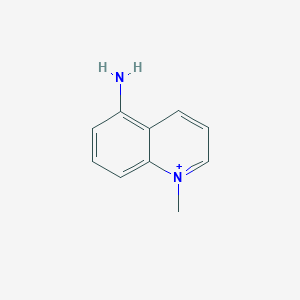5-amino-1MQ inhibits nicotinamide N-methyltransferase activity (NNMT). 5-amino-1MQ blocks NNMT to raise NAD+, a coenzyme important to cellular metabolism, raising metabolic rate and activating sirtuin-1 (SIRT1). SIRT1 is the “longevity gene” since in studies it reduces the risk of diabetes, obesity, metabolic syndrome, atherosclerosis, renal disease, liver disease, neurodegeneration, and cancer.
NMN (Nicotinamide mononucleotide) is a precursor to the cofactor NADH, which helps enzymes critical to metabolism and DNA repair function properly. Research has shown NMN to reduce age-associated body weight gain, improve energy metabolism, improve insulin sensitivity and plasma lipid profile, enhance eye function, and other pathophysiologies.
JBSNF-000088 decreases MNA levels, increases insulin sensitivity, and reduces body weight in animal models of metabolic illness. In mice with HFD-induced obesity, JBSNF-000088 reduced body weight, enhanced insulin sensitivity, and corrected glucose tolerance.
These three substances have an effect on everything from the metabolism of energy to the functioning of cells as well as the aging process. They do this largely via influencing the concentration of NAD, as well as the expression of GLUT-4 receptors, the activity of the NNMT enzyme, and the creation of chemicals known as sirtuins. Together, these molecules combine to increase cellular metabolism, which in turn helps with weight reduction and glucose management. This is accomplished by elevating cellular levels of NAD while simultaneously lowering the activity of NNMT. The synergy between these chemicals has other advantages, one of which is evident in the process of cellular aging, where it helps stem cells to survive and flourish when there are greater amounts of NAD. This results in an increased pool of healthy cells that can rapidly replace worn out or damaged cells, leading to greater tissue function and a reduction in the symptoms of aging. It is believed that by combining these three substances, it will be feasible to bring about significant improvements in energy metabolism while at the same time enhancing the anti-aging, anti-inflammatory, and anti-apoptosis action that is present in cells.
CAS: 42464-96-0
Molecular Formula: C10H11N2+



